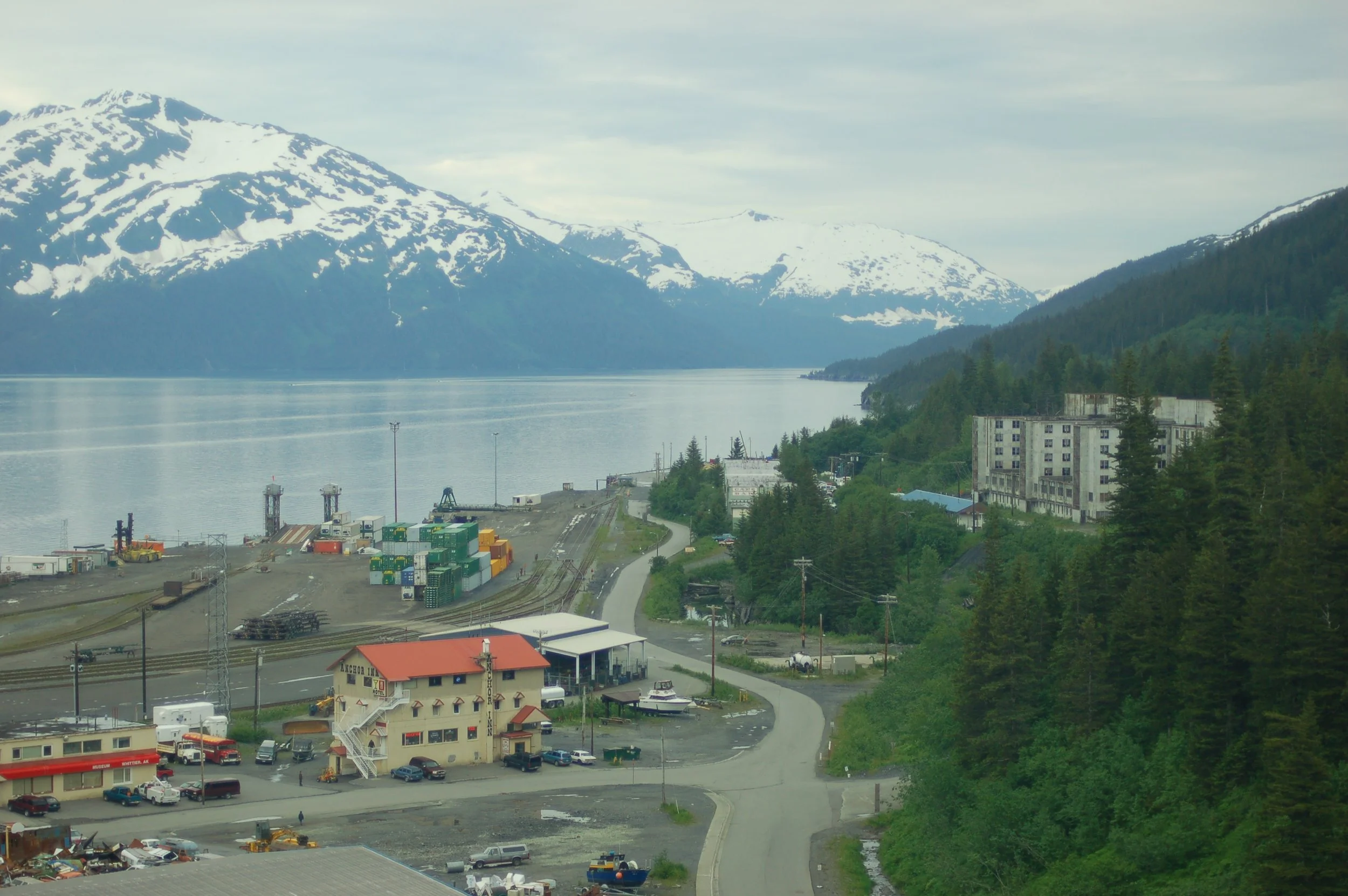File 02 - The Hum at Whittier
Date range: 2012 – 2016
Location: Whittier, Alaska
Primary sources: Anchorage Daily News (May 2014); NOAA Sound Monitoring Logs, 2012; field notes recovered from John’s 2016 recordings.
1 . Public Record
Whittier sits between mountains and sea, accessible mainly by a single tunnel that closes each night. Nearly all 200 residents live in Begich Towers, a 14-story structure built for military use in the 1950s.
Beginning in late 2012, locals started reporting a persistent low-frequency vibration — “a refrigerator hum,” one resident said —that continued day and night.
The NOAA sound station 30 km away registered a continuous tone between 95–105 Hz, most pronounced during clear weather. Power lines and marine engines were ruled out.
By 2016, the reports faded from the news. The hum, according to a few residents I contacted, never stopped.
2 . Field Investigation (2016 Visit)
Audio log 2A — “Arrival”
“You feel the sound before you hear it. It sits in the walls, in your chest.
Everyone here pretends not to notice.”
I stayed two nights in room 412 of the Towers. The building vibrated faintly — drawers rattled, water in the glass trembled.
My recorder picked up a consistent tone: 101 Hz, pulsing in ten-second intervals.
Identical to the frequency pattern from File 01 — The Lead Masks Case.
During the second night, my laptop’s spectrogram displayed irregular spikes — harmonics suggesting a human voice modulating the tone.
3 . Interviews
A. Stetson
Maintenance engineer: “We replaced every generator mount last year. Didn’t change a thing.”
R. Taylor
Retired teacher: “Sometimes it sounds like water running through the ceiling. But there’s no pipe up there.”
L. Morgan
Student (recorded 2016): “I dream it’s calling from under the floor. My mom says it follows her when she leaves town.”
At 03:10 AM on the second night, emergency lights flickered. Power outage lasted nine seconds.
Afterward the hum resumed: louder, steadier.
4 . Technical Notes
Recorder: Sony PCM-M10
Sample rate: 44.1 kHz
Amplitude: −32 dB RMS
Dominant frequency: 101.02 Hz
Spectrogram analysis revealed a secondary pattern: faint modulations every 0.42 seconds, resembling voiced consonants. When converted through phonetic software, fragments read:
“– here – … hear … me …”
No interference from nearby transmitters was detected. The building’s Wi-Fi and electrical systems were offline during the test.
5 . Personal Log
Audio Note 2B:
“I filtered the recording at home. The hum thinned out and something underneath began to move, a higher voice, small, deliberate.
It said my name.
Not clearly. More like breath through water.
I compared it to an old clip of Lilly humming from her sixth birthday. Same pitch — 101 Hz fundamental, 202 Hz harmonic.
I stopped the playback, but the tone didn’t stop. It kept going from inside the speakers.”
The apartment neighbors later complained of “low-frequency noise” the night I returned.
6 . Working Hypothesis
The Whittier hum may originate from resonant coupling between the mountain tunnel and the structural frame of the Towers, creating a Helmholtz resonance around 100 Hz.
However, the repetition interval (10 s) and the presence of a voice-like modulation suggest an intentional carrier signal — an artificial pattern possibly piggybacking on environmental vibration.
If true, it implies that low-frequency infrasound can record and re-emit human frequencies, as if replaying emotional memory embedded in the environment.
7 . Pattern Notes
Frequency: 101 Hz
Interval: 10 s
Duration: 9 s blackout
Room 412 vibration amplitude matched File 01 field slope ratio (10°)
Different continent, same pattern.
8 . Conclusion
When I left Whittier, my recorder was silent.
But at 02:10 AM the following week, the same frequency appeared in the background of an unrelated phone interview — 101 Hz, ten-second pulse.
Maybe the hum travels through structures, or through people who’ve heard it.
Maybe that’s how memory survives.
If you’ve lived in Whittier or any region where the low hum persists, record one minute of ambient sound at night and check its base frequency.
If it centers near 100 Hz, don’t listen through headphones.
Some sounds remember who heard them.
